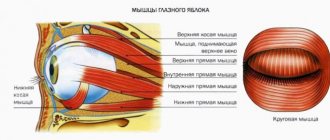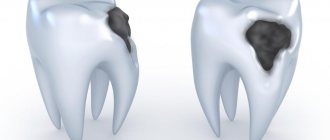White raised dots on the skin are considered a sign of a pathological process occurring in the body. It can affect both the skin itself and internal organs and systems. Any rash should be shown to a doctor and the cause of its appearance should be looked for. In some cases, a cosmetic defect is not at all dangerous and goes away on its own, while in others it requires well-chosen treatment.
Causes of white dots
If a person has white spots on the skin of the face or on another part of the body, this may be due to:
- impaired metabolic processes in the body;
- increased sweating;
- viral and infectious lesions of the epidermis;
- failure to comply with basic hygiene rules;
- excessive drinking and smoking;
- using low-quality, expired cosmetics;
- unbalanced diet;
- dysfunction of the digestive and endocrine system.
What causes white dots on the body? Skin rashes appear due to living in a negative environmental environment, genetic predisposition, exposure to ultraviolet radiation, and taking certain medications.
Vitiligo
The disease occurs very rarely (about 1% of people on Earth) among patients aged 20-40 years. Scientists believe that the hereditary factor plays a large role in the development of pathology. When melanin production is disrupted, white spots of varying sizes appear on the scalp or mucous membranes. The disease is not transmitted through household contact. In almost all cases, it has a chronic form and causes external aesthetic discomfort to the patient.
Vitiligo does not pose a direct threat to human life, but it is worth undergoing a series of studies to check the functioning of the endocrine system and internal organs.
Possible diseases
If white dots form under the skin on the face or body, then various pathologies can cause their formation, which include:
- Pityriasis versicolor . It develops due to a fungal infection of the skin, which leads to disruption of the production of melanocytes that produce pigment substances. As a result, rashes appear on the arms, legs, face, neck, back, and chest. The main provoking factor of the disease is hereditary predisposition.
- Vitiligo is a complex pathology, the causes of which are still unclear. It is provoked by living in stress, malfunctioning of the liver, and heredity.
- Leukoderma is a disease in which the process of synthesis of pigment elements is disrupted, causing white spots to appear on the neck.
Pityriasis versicolor Vitiligo Leucoderma
Zhiroviki
These are white dots on the face or body that look like yellowish grains. They can be easily palpated and have a mobile, dense structure. When pressed, the wen does not hurt. They occur due to poor skin care or impaired functioning of internal organs.
Important! Cosmetologists do not recommend squeezing out wen. Treatment of a cosmetic defect should be comprehensive, with identification and elimination of the cause of the disorder.
Comedones
These are small white bumps caused by clogged pores.
The provoking factors of their occurrence are:
- oily skin;
- smoking;
- lack of hygiene;
- hyperhidrosis;
- excessive use of cosmetics;
- using pore-clogging oils and lotions;
- hormonal imbalance;
- fungi and bacteria.
Comedones look like small bumpy elevations above the rest of the skin surface. They do not itch, do not hurt and do not cause any discomfort to humans. With improper body care, these rashes can become inflamed, turning into purulent pimples.
Milia
Externally, white raised dots on the skin are similar to closed comedones. They resemble tuberous formations with an apex covered with a thin layer of epidermis. Milia appear due to a disrupted process of death and removal of skin cells.
Based on their etiology, milia tubercles are considered to be epidermal keratin cystic formations composed of keratin. They often pop up under the eyes, in the cheeks, nipples, and genitals. It is very difficult to squeeze them out.
Cysts
They are benign neoplasms that form under the skin. Cysts are not painful, but they do look unsightly. White spots on the face of cystic origin are usually not large in size. If they occur in the extremities, the diameter of the cyst can reach 7 cm or more.
Reasons for appearance:
- metabolic disorder;
- increased sweating;
- infection with skin viruses;
- seborrhea;
- acne that is in an advanced stage.
One of the factors provoking the disorder is non-compliance with hygiene rules. A cyst can form on a child’s skin due to a genetic predisposition.
Important! Benign cystic neoplasms do not cause discomfort, but can become infected and cause complications. The penetration of infections into the cyst is often accompanied by an increase in body temperature, pain, swelling, and an increase in the size of the tubercle.
Pseudomiliums
These are white raised spots on the skin containing sebum deep in the epidermis. They often form in places where the integument layer is injured. After opening such pimples as a result of squeezing or scratching, infection with pathogenic flora can occur. Externally, the affected skin in men and women looks lumpy.
Vitiligo - symptoms and treatment
A typical sign of vitiligo is a milky-white patch with clear boundaries, often with jagged and jagged edges. It can be round, oval or irregular in shape, and in size - from a few millimeters to several centimeters in diameter. Its appearance is often preceded by erythema and itching.
During the period of progression or regression, “islands” of healthy skin are observed in the form of dots around the hair follicles[1].
Vitiligo is also accompanied by discoloration of hair growing in areas of depigmented skin. This symptom is called poliosis.
Hair loses color at any location of the spots, but more often in the scalp, eyelashes, eyebrows and beard area in men.
If hair becomes discolored against the background of clinically healthy skin, this indicates an isolated lesion of the hair follicles. This type of vitiligo is called follicular[14].
Based on location, form, prevalence and clinical manifestations, several types of vitiligo are distinguished.
Common (common) vitiligo
This type of vitiligo is the most common. It is characterized by randomly arranged multiple white spots, often with an asymmetric distribution and variable localization[9].
Acrofacial vitiligo
It is localized exclusively on the hands, feet, fingers and face, most often around the eyes, mouth, lips and nasolabial triangle. Typically occurs in adults[9].
Universal vitiligo
This form of the disease is accompanied by complete or almost complete depigmentation of the skin (more than 80-90%). Areas of unchanged skin sometimes remain on the scalp, axillary and pubic areas[1].
Focal (focal) vitiligo
With this type of vitiligo, single spots or several scattered lesions appear in one area of the body. Most often they appear in the area of innervation of the trigeminal nerve, less often in other parts of the body[9].
Segmental vitiligo
More common in children. Accounts for 15% of all types of vitiligo.
The lesions are located within one, sometimes several segments. Usually the process is unilateral, but can be bilateral, strip-like and polysegmental.
The face is mainly affected in the area of innervation of the trigeminal nerve, less commonly the thoracic, cervical, lumbar and sacral dermatomes are affected.
In 50-70% of patients with segmental vitiligo, poliosis (graying) of eyelashes and hair is observed. The location of lesions along Blashko's lines has been reported[10].
Vitiligo of the mucous membranes
Only the mucous membranes of the mouth, lips, anus, penis and vulva are affected. If rashes are observed in other areas of the body, then they speak of ordinary, widespread vitiligo [9].
Stippled vitiligo (confetti spots)
It manifests itself as characteristic depigmentation in the form of small spots 1-2 mm in diameter. They are located randomly or perifollicularly (near the hair). It is considered a sign of disease progression, but can also be observed with PUVA therapy[11].
Polychrome vitiligo
There are three types:
- tricolor (trichrome) vitiligo - characterized by the presence of a narrow strip of hyperpigmentation between the depigmented central zone and normal skin;
- four-color (quadrichrome) vitiligo - characterized by the presence of focal follicular or marginal hyperpigmentation;
- five-color (pentachrome or blue) vitiligo - manifests itself as grayish-blue spots, which represent an incontinence of dermal melanin; may occur with PUVA therapy[12].
Inflammatory vitiligo
It is characterized by the presence of an erythematous inflammatory margin along the periphery of the spot, scaling and itching. It is a rare form of the disease, usually temporary, lasting from several weeks to months[13].
Koebner phenomenon
Occurs in 34% of patients with widespread vitiligo. It is characterized by the eruption of new lesions at the site of acute and chronic injuries [15]:
- physical (wounds, scratches);
- mechanical (friction);
- chemical and thermal (burns);
- allergic contact dermatitis;
- tattoo;
- vaccination;
- constant pressure;
- inflammatory dermatoses;
- radiotherapy and phototherapy.
Presumably it arises due to adhesion defects - the attraction of one molecule to another.
Halo phenomenon (perinevus vitiligo)
Halonevus is diagnosed in 18-26% of patients with vitiligo. In some cases, it precedes vitiligo. It is a nevus surrounded by a halo of depigmented skin, which indicates regression of the nevus itself.
Vitiligo-like depigmentation can occur in patients with malignant melanoma, which is most likely due to the destructive effect of T lymphocytes on melanoma cells and simultaneously on melanocytes of normal keratinocytes [16].
Syndromes associated with vitiligo
They are severe and rare forms of vitiligo that affect organs other than the skin.
- Vogt-Koyanagi-Harada syndrome - symptoms of vitiligo are combined with uveitis, aseptic meningitis, dysakusia (sound distortion), tinnitus, peliosis and alopecia. Sometimes combined with other autoimmune diseases.[17]
- Alezzandrini syndrome includes facial vitiligo, poliosis, deafness, hereditary pigment epithelial degeneration and retinal neuroepithelium[18].
Causes of white spots in children
The appearance of white formations can be observed on a child’s skin when:
- A sharp change in hormonal levels. Often such changes are recorded in newborns.
- Accumulations in the baby’s body of estriol, a female hormone that penetrates the fetal body during intratubal development. An increased concentration of this substance is manifested by clinical symptoms, one of which is the presence of pimples, both single and multiple.
- Adaptation of the sebaceous glands to the increased work of the child’s body. As a result, rashes appear on the skin of the body, which go away on their own after a few weeks.
Important! If small white rashes in a baby do not disappear within two to three weeks, you should definitely see a pediatrician. You cannot treat your baby with drugs for adults. The doctor will first determine what caused the pathological process, and then prescribe therapy appropriate for his age and weight.
How to treat vitiligo?
If the affected area of vitiligo is no more than 20% of the body, topical glucocorticosteroids in the form of creams and ointments are first prescribed for treatment.
- methylprednisolone aceponate (advantan and analogues);
- alklometesone dipropionate (afloderm and analogues);
- betamethasone dipropionate (actiderm and analogues).
There are several schemes for using these drugs; the doctor chooses the optimal scheme based on test results, area of damage, patient’s age and other factors. If no visible effect is observed within 4-6 months, second-line drugs are prescribed - topical calcineurin inhibitors:
- tacrolimus, ointment of varying degrees of concentration;
- pimecrolimus cream.
It is worth considering that despite successful studies (2013), the diagnosis of vitiligo is still not officially included in the indications for use.
Diagnostic features
Diagnostic measures to understand what the rash means and why white dots appear on the skin include:
- Initial inspection. In some cases, this is enough for a dermatologist to understand the cause of the pathology.
- Scraping the top layer of epithelium. A day before the analysis, the patient should not wash the affected surface with soap, and also not treat it with antiseptic drugs and other products, both medicinal and cosmetic.
- Cultural sowing. This is the most highly informative test that helps identify the causative agent of the disease.
- Enzyme immunoassay of venous blood. It does not require special training.
- A biopsy in which the biomaterial is subjected to histological examination under a microscope.
Important! White spots under the skin on the face and body must be treated even in the absence of discomfort or discomfort.
Differential diagnosis
An experienced doctor is able to distinguish vitiligo from other skin pathologies by external clinical manifestations. Diagnosis of the disease is carried out on the basis of an initial examination and careful collection of anamnesis of the disease. The specialist, in a direct conversation, tries to find out from the patient when the first areas of discoloration appeared, what preceded their formation, how quickly the disease progresses, and whether there are any complaints about the general condition.
Vitiligo must be differentiated from total albinism, from lichen (simple and pityriasis versicolor), from psoriasis and neurodermatitis. The absence of any unpleasant sensations (burning, itching, peeling) or rash speaks in favor of vitiligo. Vitiligo spots do not appear on the palms and soles; areas of discoloration occur mainly on exposed areas of the body. They constantly expand towards the periphery and merge with each other. In discolored areas of the body, sebum production and sweating are noticeably reduced. The number of spots increases in spring and summer.
During the examination, the doctor must examine the condition of the skin under a Wood's lamp. It allows you to see new areas of discoloration that are not yet visible in normal daylight. This test is used to make predictions about the further development of pathology.
Afterwards, the patient undergoes a full diagnostic examination to identify the reasons for the appearance of vitiligo symptoms.
Treatment options
The doctor will tell you how to treat the pathology. You can eliminate white spots on the skin using complex therapy.
You definitely need to go to a dermatologist when you have a rash:
- increase in size;
- multiply;
- begin to cause discomfort and severe pain;
- itchy, change color;
- swelling, redness, inflammation;
- lead to a deterioration in overall health.
Traditional preparations
The specialist can prescribe the following medications to the patient to reduce the volume of sebum production:
- Skinoren gel (costs about 700 rubles);
- Zinc ointment (costs 34 rubles);
- Salicylic ointment (costs 22 rubles);
- Boro Plus cream (costs 85 rubles).
Skinoren gel Zinc ointment Salicylic ointment Boro plus
If white convex dots on the skin are the result of the active proliferation of pathogenic bacteria, then use:
- Metrogyl gel (costs 168 rubles);
- Erythromycin ointment (costs 72 rubles);
- Clindamycin cream (cost 150 rubles);
- gel Dalatsin (price 860 rubles).
Metrogyl gel Erythromycin Clindamycin Dalacin
ethnoscience
You can make white spots under the skin on the face and body less noticeable using folk recipes. However, it is worth considering that you can cope with the problem using home methods only in case of irregularly protruding dermatological defects and with the permission of a doctor.
A test helps rule out a possible allergic reaction: apply the selected product to the crook of the elbow and wait a day. If the skin remains clean, does not redden, itch, or swell, then you can use it without fear for your health.
The following recipes are especially popular:
- A packet of live yeast is mixed with a teaspoon of hydrogen peroxide. Add a tablespoon of honey and a little lemon juice. The ingredients are thoroughly mixed and applied to the problem area for 15-20 minutes. Afterwards, wash off with running water.
- A large spoonful of calendula and chamomile flowers is steamed in 300 ml of boiling water. Keep in a thermos for 2-3 hours, filter and moisten a cotton sponge with the composition. Apply to the affected areas 2-3 times a day. This recipe is great for treating rashes under the eyes and on the face.
- A piece of raw pumpkin is grated. 2 large spoons of the resulting gruel are mixed with nettle decoction. To prepare it, 3 large spoons of dry or fresh plant are steamed in 150 ml of boiling water. In addition to pumpkin, add a teaspoon of oatmeal to the finished composition. The resulting mass is spread on the problem area of the body for 25-30 minutes, and then washed off with mineral water.
- Grate raw potatoes and apply to light spots for 20 minutes. After this, the face is washed and moisturizer is applied.
- Mix two large spoons of potato starch with a small spoon of hydrogen peroxide. The composition is applied to the problem area and wait until it dries completely. Then wash it off.
Cosmetology procedures
remove white spots on the skin of the legs and other parts of the body in beauty salons using:
- acid peeling;
- skin cleansing (sometimes mechanical, ultrasonic, vacuum);
- procedures for removing sebaceous plugs;
- photoradiotherapy;
- curettage;
- laser resurfacing;
- microdermabrasion.
Mechanical facial cleansing is carried out not at home, but in a beauty salon. The cosmetologist opens the tubercle with a thin long needle and begins to scrape out its contents. After the procedure, small wounds remain, which gradually heal.
In severe cases, to remove white spots on the face and body, they resort to:
- laser coagulation. Skin rashes near sensitive areas are removed with laser radiation. The treatment procedure is painless and low-traumatic. After treatment for a month, the patient is prohibited from going to the bathhouse and sauna, and it is also recommended to avoid contact of the epidermis with chlorine;
- radiosurgery, in which formations are excised by radio waves. After the procedure, no traces remain;
- cryotherapy with cold treatment;
- electrocoagulation.
Only a specialist can determine which therapy methods to use and how to treat the pathology after receiving the patient’s test results.
Traditional treatment for vitiligo
There are no universal drug treatment regimens. Tactics are developed in each specific case, taking into account the existing symptoms. A complex therapy is selected that will eliminate the manifestations of the disease and the changes that led to its debut.
For systemic treatment, the following are usually prescribed:
- Corticosteroids (Prednisolone, Betamethasone), which suppress immune aggression aimed at destroying melanocytes.
- Antimalarial drugs (“Hydroxychloroquine”, “Chloroquine diphosphate”), which have anti-inflammatory and immunomodulatory effects. They suppress free radicals and protect against the negative effects of ultraviolet radiation.
- Immunomodulators (“Polyoxidonium”, “Cyclosporin A”), suppressing the immune attack on melanocytes.
- Agents that stimulate liver metabolism (Essentiale, Karsil) help restore liver cells and improve the functioning of the organ as a whole.
- Digestive enzymes (“Creon”, “Enzistal”), compensating for the lack of digestive juices, improving the process of absorption of nutrients.
- Vitamin complexes (thiamine, ascorbic acid, folic acid, tocopherol acetate), improving metabolic processes, providing cellular nutrition, normalizing the production of enzymes.
- Zinc and iron preparations (“Zinkovital”, “Iron glycerophosphate”), stimulating the production of enzymes involved in the synthesis and transport of melanin.
- Photosensitizers (“Psoralen”, “Beroxan”), stimulating the production of melanin and increasing the sensitivity of the skin to ultraviolet radiation.
For local treatment of discolored spots the following are prescribed:
- Corticosteroid ointments (“Fluorocort”, “Polcortolone”).
- Calcineurin inhibitors (Protopic, Elidel).
- Products that stimulate melanin production (Melagenin lotion).
- Creams that help whiten skin (Monobeson).
- Concealing cosmetics that help color discolored spots (Viticolor gel, Drula Pigment cream).
To enhance the therapeutic effect, physiotherapy procedures are used:
- Puva therapy. It is carried out as follows: the patient takes special photosensitizers orally, then they are applied to the skin in the form of lotions, after a few hours the discolored areas of the skin are irradiated. A mercury-quartz lamp is used for this.
- Therapy with narrow-wave lamps. During this procedure, the skin is exposed to short-term radiation (light wavelength 312 nm).
- Excimer laser. The procedure allows you to accelerate metabolic processes occurring in the cells of the affected epidermis, which stimulates the production of enzymes involved in the synthesis of melanin.
Each procedure has its own contraindications, so before prescribing, all existing risks are weighed.
General treatment recommendations
remove white spots under the skin on your fingers, feet, face and other parts of the body if you understand why they appear and use the products prescribed by a dermatologist:
- when eliminating excessive accumulation of sebum, use products designed to care for oily epidermis;
- The patient must be tested for hormone and antibody levels. If problems with the thyroid gland are detected, it is necessary to treat this organ;
- undergo all examinations prescribed by the doctor to identify pathologies affecting the gastrointestinal tract, cardiovascular system, and genitourinary tract;
- if white or light-colored formations appear on the skin, you need to see a therapist or dermatologist;
- White spots on the skin will go away on their own after exposure to the hot sun. If tanned skin is slowly recovering, you should consult a specialist;
- assess the concentration of cholesterol in the bloodstream. If it is elevated, take special medications and change your lifestyle;
- if there is a hereditary predisposition due to which various rashes appear on the skin, undergo cosmetic procedures annually and regularly carry out preventive maintenance;
- people with fair skin should refrain from visiting solariums and spending long periods on the beach;
- try to avoid any damage to the skin;
- raised white spots on the skin should not be squeezed out. The squeezing process will not improve the condition of the epidermis, but can only cause harm, which can lead to infection of the wound, suppuration, and inflammation;
- minimize the use of decorative cosmetics and try to use only high-quality products;
- use cleansing scrubs and other cleansers that help reduce the amount of toxic elements accumulated in the upper and lower layers of the dermis and leading to the appearance of whiteheads;
- eat right, including a lot of fresh fruits, vegetables, and herbs in your diet.
You should not expect that white spots on your hands or other part of the body will disappear in one day. The treatment process can be quite lengthy. It is important to identify what these formations are and what provoking factors contributed to their appearance.
How effective is home treatment with folk remedies?
Unfortunately, the use of folk remedies in the treatment of vitiligo does not bring a positive effect. In most cases, patients experience complications and deterioration of their condition. Therefore, it is not recommended to self-medicate, and at the first unpleasant symptoms, immediately contact an experienced specialist.
Vitiligo is very rare and is a disease caused by a disorder in the production of melanin in the skin. It appears as white spots of varying sizes that can grow over time. For treatment, drug therapy and a complex of physical procedures are used. In most cases, vitiligo accompanies a person for the rest of his life. There are no specific measures to prevent the disease.
Prevention of points
To avoid the formation of white spots under the skin on the face and body area (for example, on the foot, on the palm, in the area of the fingers, under the eyes, etc.), you should follow the following recommendations of dermatologists:
- cleanse the skin in the morning and evening hours;
- select high-quality cosmetics to care for the epidermis;
- do not use aggressive products that can cause burns or irritation;
- do not touch your face with dirty hands;
- give up bad habits;
- contact a dermatologist in a timely manner (whitish bumps and rashes on the body and face in men, women and children are a good reason to visit a specialist);
- monitor the proper functioning of the gastrointestinal tract and thyroid gland;
- strengthen the body's defenses;
- spend more time in the fresh air;
- limit the consumption of unhealthy, heavy foods.
It happens that rashes appear on tanned skin due to exposure to ultraviolet radiation and burns. Also, due to too much exposure to the sun, the skin after tanning shows red areas that turn into white blisters. To keep your skin healthy, you need to avoid contact with ultraviolet radiation, lubricate your body with sunscreen and not sunbathe from 11 a.m. to 4 p.m. People who have unsightly spots and burns on their skin after tanning should use healing creams (for example, Panthenol , which costs 150 rubles).
Prevention methods
There is no specific prevention of vitiligo, but there are a number of recommendations that can help reduce the risks of the dysfunctions described in the article. Doctors recommend:
- Eat right, include in your diet foods that can compensate for the lack of microelements necessary for the production of melanin.
- Monitor the health of the gastrointestinal tract.
- Take care of your dental health.
- Prevent helminthic infestations.
- To live an active lifestyle.
- Constantly strengthen your immune system.
- Develop stress resistance.
- Avoid uncontrolled use of any medications.
When the first symptoms of vitiligo appear, seek help from a dermatologist.











